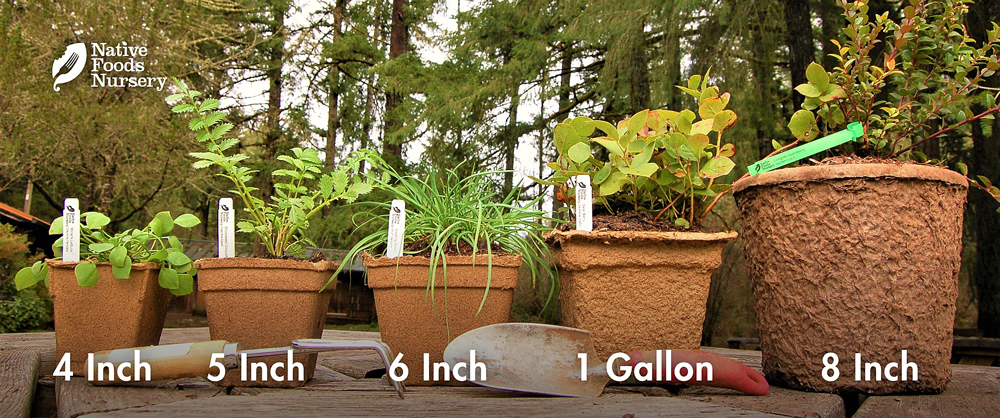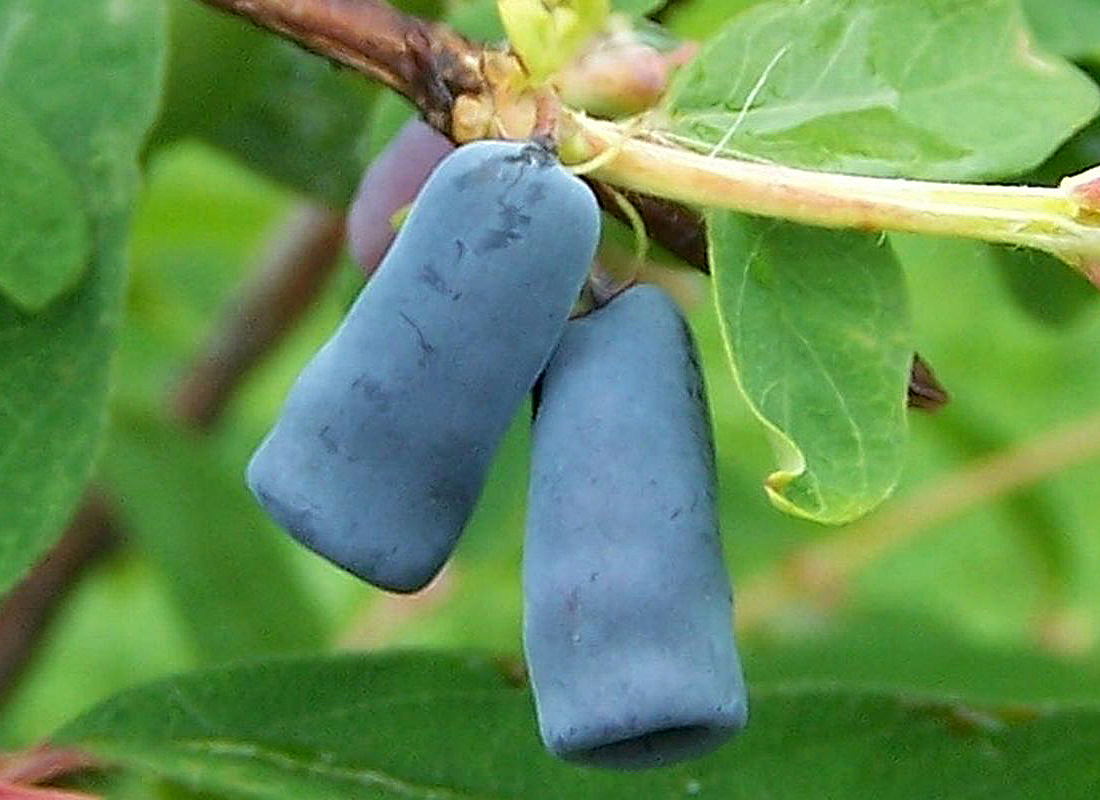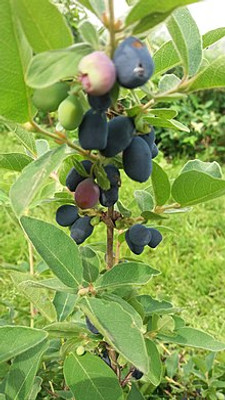Honeyberry
- Current Stock:
- 0
- Other Names:
- Haskap, Blue Honeysuckle, Sweetberry Honeysuckle, Fly Honeysuckle, Blue-berried Honeysuckle
- Latin Name:
- Lonicera caerulea
Honeyberries, also known as Haskaps, are stately medium-sized shrubs with delicious blue berries. We offer two named varieties are late bloomers and are bred for sweetness, bigger fruit size, and pollination compatibility - "Beauty" and the "Beast".
***NOTE: BOTH VARIEITIES ARE NEEDED TO SET FRUIT and Require Minimum 1000 Chill Hrs***
Edible Uses
Honeyberries are very tasty, with a similar color and flavor to blueberries and can be used in all of the same ways. They can be used alone or with other berries to make pastries, jams, juice, ice cream, yogurt, sauces, candies and wine.
The berries also have health benefits, containing high amounts of ascorbic acid and bioactive flavonoids, and antioxidants (even greater than blueberries). The berries can be eaten fresh or frozen for later use.
Despite the name, "Beauty" tends to have even larger berries than the "Beast" - both are excellent in flavor and firm.
Ornamental Qualities
The ornamental qualities of the honeyberry should not be overlooked. The small to medium sized shrubs can be thick with oval-shaped leaves, clusters of small white flowers, and deep blue elongated berries. The flowers are trumpet-shaped and attractive to bees, butterflies and birds. The bare branches in the Winter have a reddish tinge.
Honeyberries are a great choice for long-term edible landscapes - they can live for over 50 years! Try planting them alongside huckleberries, thimbleberries, or currants.
Environment and Culture
Honeyberry is circumpolar, native to North America, Russia, and Japan. These varieties, “Beauty” and “Beast”, have mixed heritage: Japanese, Russian, and Kurile. These berries are primarily found in heavy peat wetlands of northern boreal forests, but have also adapted to mountain terrain and coastal areas. They are very cold-hardy, tolerating temperatures as low as minus 47 degrees Celsuis.
Honeyberries require a second variety to get the best fruit set. "Beauty" and "Beast" have great compatibility for pollination. Plant at least one of each. Or, if you're primarily wanting "Beauty", consider planting at least one "Beast" for every 3 "Beauties".
Northwest Native American tribes today still value this special plant as food, medicine, and family. Despite great cultural losses, they continue to work towards stewarding and restoring wild populations, both strengthening the integrity of the ecology and sustaining their cultural heritage and wisdom. These strong and recovering peoples and plants deserve our respect, gratitude, and reparations. (Learn more & how to help on our Charitable Giving page.)
Harvest, Care, and Preparation
Both varieties flower and ripen later than most varieties of Honeyberry - you can expect to harvest in June/July, depending on your climate. The plants themselves are not as fussy as blueberries and will grow in most conditions although they like to be sheltered from hot southern sun exposure. You may have to cover the bushes in nets to keep the birds from eating the berries. The plants will benefit greatly from regular mulching and pruning.
Native Range: Circumpolar. AK, BC
USDA zones: 2 to 9 (regular irrigation required in upper zones)
Ease of Care: Easy
Deer Resistance: Somewhat deer resistant
Light Requirements: Full sun to part shade
Soil Type: Prefers well drained soil
Water Requirements: Moist to Wet, water during establishment (2 years)
Pollination: Requires two varieties for pollination, plant at least one "Beauty" and one "Beast"
Bearing Age: 1-2 years
Size at Maturity: 4-6’
Plant Spacing: 6ft
Bloom Time: February-June, depending on climate and variety. It blooms here in Zone 8 in late March.
Harvest Time: May-July, depending on climate and variety.
Pot Sizing Guide

Our policy lasts 30 days. If 30 days have gone by since your purchase, unfortunately we can’t offer you a refund or exchange. To be eligible for a return, your item must be unused and in the same condition that you received it. It must also be in the original packaging. Gift cards are non-refundable. Once your return is received and inspected, we will send you an email to notify you that we have received your returned item. We will also notify you of the approval or rejection of your refund. If you are approved, then your refund will be processed, and a credit will automatically be applied to your credit card or original method of payment, within a certain amount of days.










